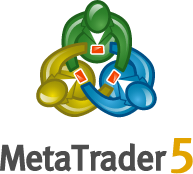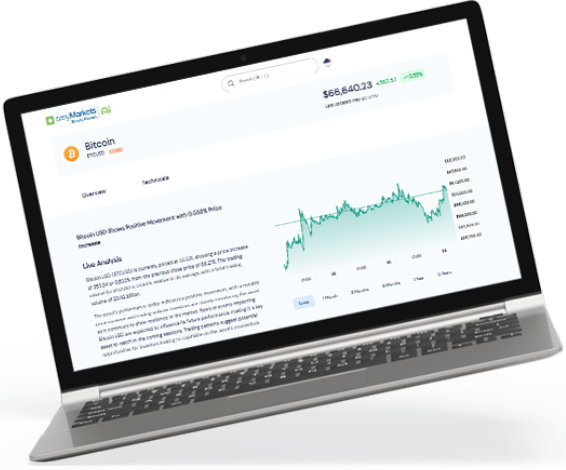What If… Hyperinflation Hits Turkey?

Imagine waking up to find the price of bread has doubled overnight—not just once, but several times—until even a simple meal becomes a luxury. This will be the reality in Turkey, a country where economic crisis is almost as predictable as the sun rising. But in 2025, this turbulence will become much worse.
By July this year, hyperinflation in Turkey will fully take over the economy. Prices will rise unimaginably high, pushing the lira’s value to drop severely and making the price of everyday items unaffordable. Imports will stop almost completely, and Turkey will have no choice but to rely on its own production. By December 2025, the effects of this economic strain will be undeniable, triggering an economic crisis that no one can ignore.
How did we get here?
Hyperinflation in Turkey will not just happen overnight; it will likely result from a series of missteps, unfortunate timing, and excessive government intervention. When you combine currency devaluation, political instability, and challenges in monetary policy, this provides a difficult economic environment which will lead directly to hyperinflation in Turkey.
The price of inflation
A land with a long history, this nation has also been home to some of the highest inflation globally. By October 2022, inflation hit a shocking 85%, setting the stage for the economic crisis we will see soon. The Turkish lira, once relatively stable at 3.6 TL to the US dollar before COVID-19, had devalued 10 times by 2023, dropping to 36 TL to the dollar. At this point, the live currency rate became a key reference point for traders monitoring daily price fluctuations. With its sharp drop in value, importing goods has become significantly more expensive and less practical. Normally, this would lead a country to lean more on its own production, but Turkey’s agricultural sector has its own troubles. Picture plenty of farmland, but most is arid than fertile. Add to that a heavy dependence on imported fertilizers and machinery, and you have a farming system that is missing many parts – despite some top-quality crops like hazelnuts and apricots.
But with inflation running wild, families are feeling the pressure and the reality of rising prices is making it harder for many to get by. Inflation may be invisible, but its impact is felt on the dinner table.
Battle over interest rates
Another extreme feature of Turkey’s economy? Interest rates. In the decade following the 2008 Financial Crisis, most countries aimed for near-zero interest rates. Turkey, on the other hand, chose an extremely aggressive rate hike in January 2014, from 4.75% to 10% following political uncertainty as an attempt to restore investor confidence. In 2018, the Central Bank of Turkey (CBRT) dramatically raised rates even further to 24%, and even a year later when the CBRT reduced rates, they only did so by 50% to 12% - still extremely high.
Aware of this, the government continued to push for further cuts – and the way of achieving this? Ensuring the CBRT Governor’s monetary policy was aligned with the government. In the last 5 years, Turkey has seen a high turnover of Central Bank governors—3, to be exact, with 2 being dismissed for opposing government’s persistent push for low interest rates. The Central Bank was not the only affected government branch – in 2020, the Finance and Treasury Minister was dismissed after proposing higher rates to tackle inflation. Following this, the Turkish Lira’s value tumbled by approximately 10% to an all-time low – 8.5 to the US dollar.
Path to hyperinflation in Turkey

Throughout 2025, Turkey will face inflationary pressures due to a series of bold but, unfortunately, risky economic moves. Following the first rate cut in over a year on the 26th of December 2024, which marked a shift in an 18-month monetary policy, the government will insist on further slashing interest rates on a monthly basis.
In January 2025, interest rates will be cut by a further 2% to 45%, resulting in inflation rising to around 50%. February will see further cuts by 5% to 40%, raising inflation to 60%, eroding purchasing power, and causing a decline in consumer spending. In turn, growth will slow down. Faced with a soaring cost of living, unemployment and a general economic crisis, the government will face extreme unpopularity.
Finally, in March 2025, under significant pressure to act, the Turkish government will once again insist on further slashing interest rates —this time, from around 40% to a shocking 10%. Inflation will skyrocket to 80%, echoing the 85.5% inflation in October 2022. This non-stop interference will completely destroy the Central Bank’s credibility, and the Turkish lira, once a respectable currency, now will collapse to historic lows of 100 TL to the USD, with its purchasing power evaporating to a fraction of its former value. This will result in the Governor of the CBRT being scapegoated and dismissed, despite aligning with the government’s monetary policy, to maintain the government’s political image.
With a fresh CBRT Governor stepping into the job, the government’s push for drastic interest rate cuts will continue like clockwork. Why this obsession with rate cuts? The Turkish government believes low rates are the key to economic growth and job creation, even at the cost of spiraling inflation. He thinks industries like construction will thrive with cheap credit, boosting political support. This belief will play a significant role in accelerating hyperinflation in Turkey throughout 2025. Fearing a recession, they will bet on a long-term fix, even if it means enduring hyperinflation in Turkey for now. It is classic political tenacity—they will not reverse their low-rate policy, hoping it will eventually pull the nation out of this mess, with the short-term pain worth the long-term gain.
By April 2025, despite inflation shooting up to 85%, the rate will dip to 7%. In May, inflation will hit 90%, but the government, determined, will cut rates further to 4%, followed by 2% in June, and, by July, we are looking at a 0 percent interest rate as inflation races toward 100%+ - causing Hyperinflation in Turkey.
Ripple effects
The aftermath of hyperinflation in Turkey will be felt immediately and everywhere. By the end of 2025, inflation will hit a shocking 300% in some sectors. Prices for basic necessities will skyrocket, doubling in what feels like the blink of an eye. Families will clutch their wallets, wondering if they can stretch their lira far enough for bread or even a handful of vegetables. The lira, already weak from years of devaluation, will collapse even further, leaving its value worthless.
With hyperinflation in Turkey at historic levels, imports will become practically non-existent. Turkey’s dependence on expensive essentials like oil, fertilizers, and gold will become its Achilles’ heel. With hyperinflation in Turkey driving prices higher, importing these goods will become unsustainable. As costs fly through the roof, supply chains crumble, leaving store shelves and markets empty. Bazaars will no longer be busy and vibrant. Even grabbing a meal at a restaurant will become a memory that is reality for only the wealthiest.
Turkey’s lack of natural resources adds another layer to this crisis. Without domestic oil or gold reserves, the country cannot look domestically for relief. Meanwhile, Western countries’ stable interest rates will amplify the pain, making the lira’s already weak purchasing power nearly useless on the global stage.
As 2025 draws to a close, Turkey’s economy will look more like a house of cards than a thriving system. Families will ration meals, businesses will shutter, and survival will become the top priority. For a nation known for its longevity, this will be a very dark chapter.
Looking ahead
As citizens battle with the fallout of Hyperinflation in Turkey, the future will be full of both challenges and possibilities. In 2026, several major trends are likely to emerge, each reshaping the country’s economy and politics.
Political unrest will be unavoidable. Public dissatisfaction, which has already reached a boiling point, will lead to a collapse of the current government in July 2025. With that, the region will see huge shifts, including separatist movements that will redraw maps and intensify geopolitical tensions in the region around Turkey, impacting neighboring countries and global powers.
A new leadership will bring changes to reverse the former Turkish government’s controversial monetary policies. Higher interest rates will become standard, as efforts to stabilize the lira and rebuild international trust will take center stage. But rebuilding trust in the aftermath of hyperinflation in Turkey will be a slow, difficult process. These adjustments will not deliver instant relief. Inflation will remain high, imports very rare, and domestic production will be stretched thin for at least the next few years.
Turkey’s road to recovery will depend on its ability to build a self-reliant economy. This shift, though painful, could spark innovation in agriculture and manufacturing. But in 2026, the reliance on domestic production will continue, leaving the average Turkish citizen in a reality shaped by scarcity and survival.
What this means for traders today
For traders in 2025, hyperinflation in Turkey will present both challenges and opportunities. With Turkish interest rates dropping as low as 0%, hyperinflation in Turkey will destabilize the lira even further, prompting many to trade commodities like gold instead. The weaker the lira gets, the higher the demand for Gold due to its status as a safe-haven asset.
When it comes to other commodities, Turkey contributes 3% of global wheat production, although most of it is consumed internally. While this limits its impact on the global economy, restrictions on other key exports like apricots and hazelnuts could still affect regional supply chains. Wheat prices in neighbouring countries like Iraq and Syria may see fluctuations, but global markets will remain largely unaffected.
As Turkey faces the consequences of hyperinflation, the resilience of its people and the adaptability of global markets will determine whether this economic crisis is a cautionary tale or a turning point in Turkish economic history.























